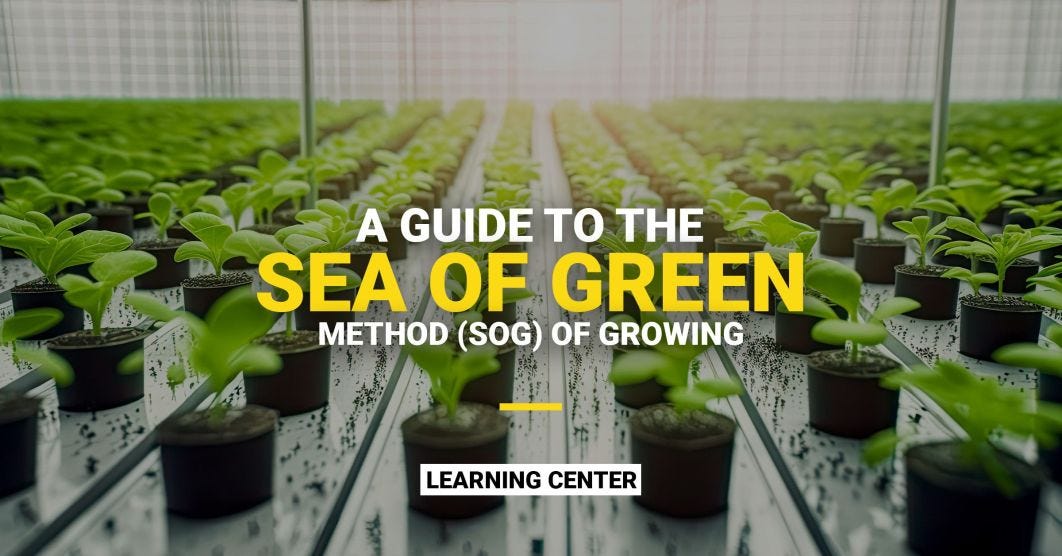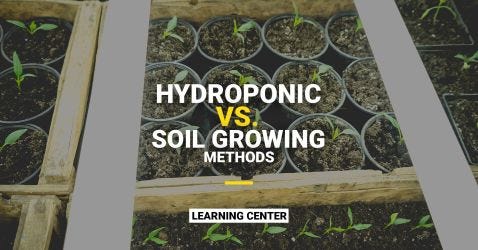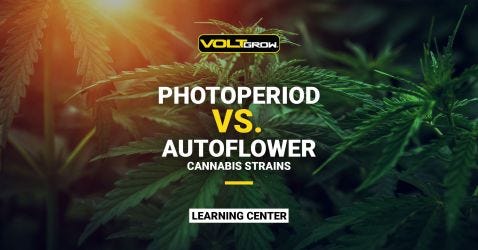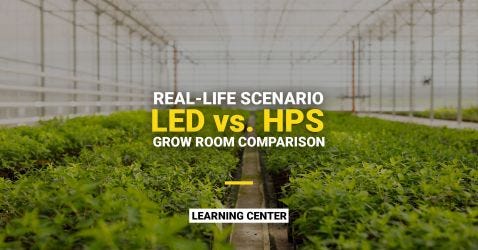What is the Sea of Green Method?
The sea of green (SOG) method is a technique used to maximize yield in a limited grow space. It is done by growing many small plants in a compact area rather than focusing on a few larger plants. This tight packing of the plants in a smaller space causes the plants to grow together and create a canopy of buds, hence the name “sea of green”.
With this method, you force the plants into flowering much earlier, which trains them to use their canopy in the most efficient way. The compactness of the plants results in them focusing less on their side blooms and instead focusing on developing one main, heavy bloom. They can begin flowering when they are much smaller since they only need to support a large single cola (a cluster of buds that grow tightly together), rather than having to stay in the vegetative stage longer to get big enough to support multiple. This expedited growing process allows for a greater yield in a much shorter harvest time.
How To Practice the Sea of Green Method
- First, like with any grow, you need to germinate seeds or get cuttings to create clones. For this method, it is more ideal to use clones since they flower faster than seeds. Also, with clones, you can guarantee they are all identical, which is important in the SOG method since you need an even-height canopy.
- As for which strain to choose, not all strains are suitable for the SOG method. Indicas are preferable since they grow shorter and bushier compared to sativas, and also have a faster flowering cycle.
- You want to use smaller pots (around 4-6 liters) for the SOG method to help prevent plants from growing too tall and to force them to focus resources on the single main bloom. The pots are also placed much closer together (1-2 plants per square foot is typical), but make sure they are not too concentrated to the point where plants become stressed from competing for light. SOG growers typically have 4-6 times as many plants compared to what a standard grower would have in the same space.
- Netting is also recommended since plants in SOG are top-heavy. It is suggested to install netting at the beginning of your grow, since it becomes difficult to access the centrally located plants as they grow bigger and are so close together.
- Once you are ready to start the vegetative stage, you will grow the plants with 18 hours of light and 6 hours of complete darkness. The vegetative cycle will be much shorter than a typical grow, only lasting 4-6 weeks until they reach about 10-12 inches in height. Some growers even switch to flower as early as after 2-3 weeks when the plants are around 6 inches tall.
- As your grow develops, make sure the plants are at an even height and are all getting equal amounts of light. This is when your lighting choice becomes very important. You want to make sure the design layout of your light has evenly distributed diodes, rather than having light more concentrated in specific areas. VOLT Grow®’s FL-1 Full-Cycle LED Grow Light has a ladder design with evenly spaced diodes that allows for a very uniform spread of light optimal for the SOG method.
- Once you switch to flower, the light regimen will change to 12 hours of light and 12 hours of darkness. This will force the plants to widen their canopy and concentrate their energy and resources on the main cola.
- After the canopy forms, you can trim the branches underneath it, so no energy is wasted developing side branch growth. You can propagate these trimmings and use them for clones in the future.
- Lastly, once your plants are ready, it is time for harvest. The time spent in flower will vary and depend on the specific strain you grow. If the trichomes of the buds are white and cloudy, they are most likely ready for harvest. In the SOG method, the plants will be smaller, however, the yield quantity per square foot will be larger than traditional grows because of the extra plants.
Advantages of Sea of Green Method
- Good for getting big yields in limited, small grow spaces
- Shorter grow cycles mean more frequent, heavy harvests
- More efficient use of your space and light reach
- Provide future clones from trimmings
- Good for commercial or large grows who don’t have the time to tend to every plant individually and have maintenance systems in place
- Shorter plants allow for vertical, multi-level grow rooms or those with limited headroom
- Optimal for Indica strains
- Very easy grow method since there is no training or pruning required
Disadvantages of Sea of Green Method
- Need enough plants to create a dense canopy, which can be a problem for those growing where cultivation is illegal and the number of plants is limited
- Plant size will be smaller
- Strains are limited since they need to have a quick vegetative cycle
- It is harder to grow multiple different strains at the same time since the canopy needs to be even
- There is increased maintenance since there are more plants, which also can be hard to access in the center of the canopy if you do not have a system in place
- The condensed area will cause any pest problems to spread much quicker and increase the chance of mold






